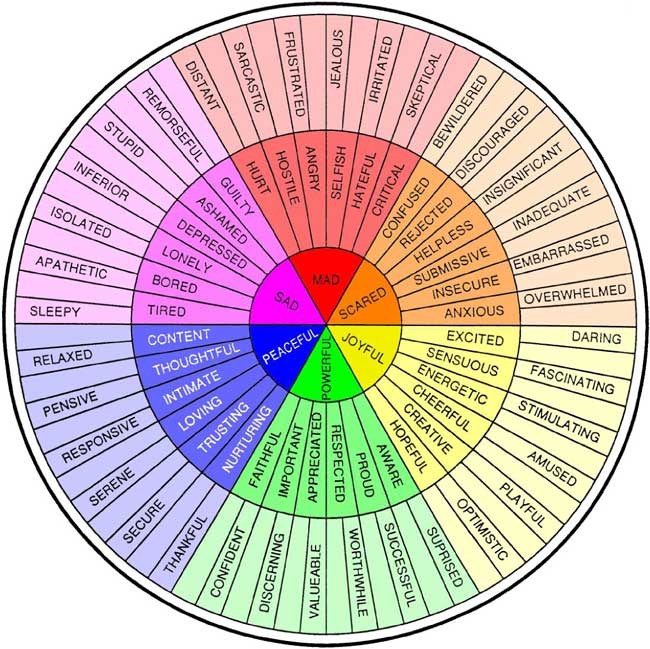‘Feelings Wheel’ Will Help You Better Describe Your Emotions

Unless you’re a poet or an expert wordsmith, finding exactly the right word to describe how you feel can be hard. Wait, make that difficult. Or maybe burdensome? Toilsome?!
Enter the feelings wheel, which will help you pinpoint an adjective to accurately reflect how you’re feeling. For example, if you feel joyful, a more specific descriptor might be excited, which could then be refined even further to daring. Or, on the flip side, if your root feeling is sad, could it be stemming from feeling ashamed, or, even more specifically remorseful?
While the wheel is a great tool to help build your vocabulary, it actually was developed by Dr. Gloria Willcox decades ago and has been used by several counseling centers and outreach groups as a way to help clients better describe their emotions.
The wheel has six core feelings: mad, scared, joyful, powerful, peaceful and sad. A secondary ring of words helps narrow those feelings down. A third, outer ring gets even more specific. In all, there are 72 adjectives to link to your feelings.
Looking to expand your vocabulary even more?
Other vocabulary charts to help you better express yourself can be found online. For example, Proofreading Services offers this chart of 128 words to help you curb your use of “very” and replace it with stronger adjectives. Some examples? Serene is a better way to say “very calm.” Lavish is a fair substitute for “very fancy,” and adorable will suffice if you’re trying to say “very cute.”
Another fun way to build your vocabulary is by bookmarking The New York Times’ “Word of the Day” page, which will introduce you to words as well as show how often they’ve been used in Times’ articles during the past year and show you the word in context from a previous article. For example, “supposititious” was a recent “Word of the Day.” Defined, the adjective means “based primarily on surmise rather than actual evidence.” It’s only appeared in the New York Times three times in the past 42 years.
[h/t: Lifehacker]






